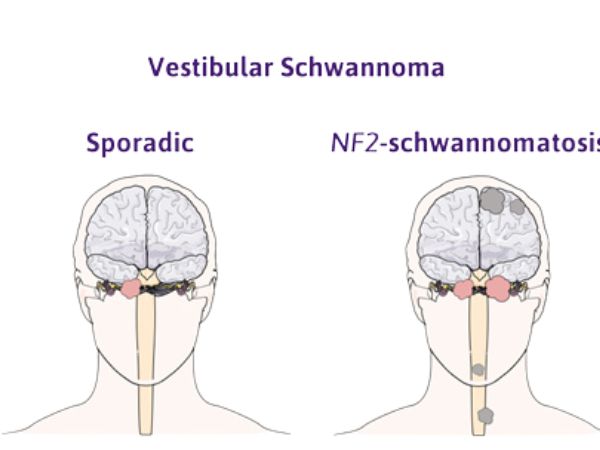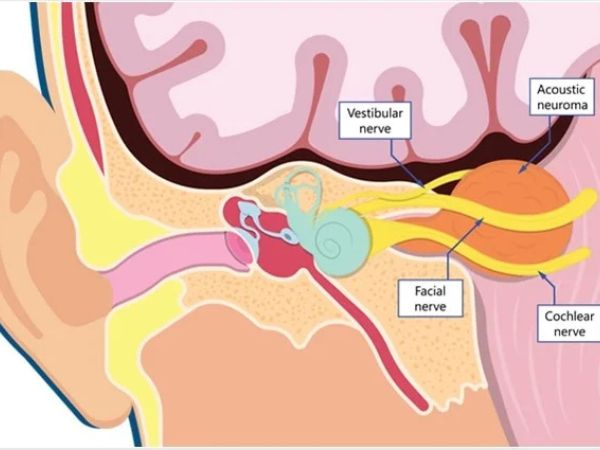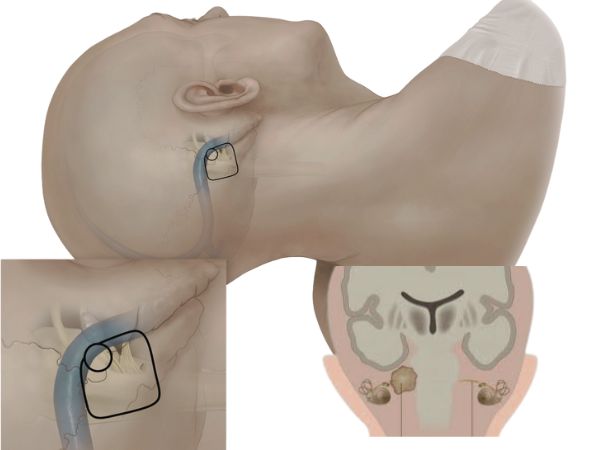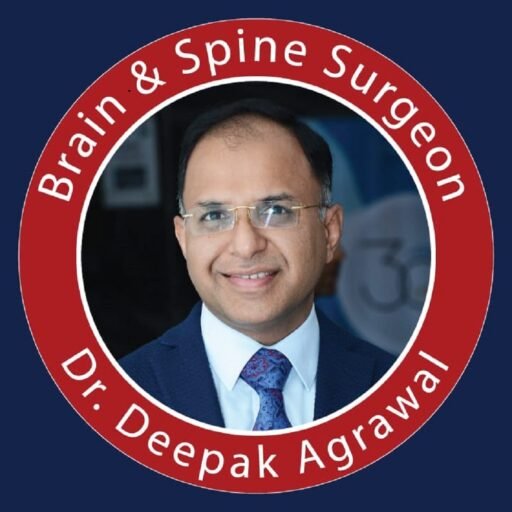Topics
Table of Contents

NF2: What is it?
The rare genetic illness known as neurofibromatosis type 2 (NF2) mostly affects the neurological system. Numerous benign (non-cancerous) tumors growing throughout the nerves, particularly in the brain and spinal cord, are its defining feature. Bilateral vestibular schwannomas, or tumors that develop on both vestibular nerves involved in hearing and balance, are the defining feature of NF2. Adolescence or early adulthood is typically when this illness first appears, and it steadily worsens with time.

Vestibular Schwannomas: What Are They?
The Schwann cells that cover the vestibular nerve give birth to benign tumours called vestibular schwannomas, sometimes referred to as acoustic neuromas. This nerve is an essential component of the vestibulocochlear nerve, the eighth cranial nerve that sends information to the brain from the inner ear about balance and sound.
Vestibular schwannomas usually form on both sides of the brain in people with NF2, and because they are located close to important brain regions, they can cause a variety of symptoms and consequences.
Vestibular Schwannoma symptoms in NF2

- Patients with NF2 frequently experience bilateral vestibular schwannomas, which can affect both sides. These symptoms can include:
- Hearing Loss: The most prevalent symptom and sometimes one of the first indicators is progressive hearing loss.
- Ear ringing or buzzing is known as tinnitus.
- Balance problems include unsteadiness or trouble walking as a result of a malfunctioning balance.
- Facial Weakness or Numbness: As tumours enlarge, they may compress nearby cranial nerves, impairing movement and sensation in the face.
- In more severe situations, headaches are caused by elevated pressure inside the skull.
Vestibular Schwannoma Diagnosis in NF2
Vestibular schwannomas in NF2 are usually diagnosed by:

- The gold standard for identifying vestibular schwannomas is magnetic resonance imaging, or MRI scans. It offers fine-grained pictures of the inner ear and brain.
- Audiometry: To assess the degree of hearing loss, hearing tests are conducted.
- Genetic Testing: To find mutations in the NF2 gene, genetic testing is frequently used to confirm NF2.
Vestibular Schwannoma Treatment Options in NF2
In order to treat vestibular schwannomas in NF2, a multidisciplinary approach is necessary. Controlling tumour growth, protecting hearing, and reducing neurological impairments are the objectives.
- Observation
A “watch and wait” approach with routine MRI scans is frequently advised to track tumour progression in situations when tumours are small and symptoms are minimal.
- Removal via Microsurgical
When large tumours press brain regions or cause severe symptoms, surgery may be necessary. However, there are dangers associated with surgery, including hearing loss, injury to the facial nerves, and balance issues, particularly in patients with NF2, where both sides are affected.
- Radiosurgery using Gamma Knives
For NF2 patients with vestibular schwannomas, Gamma Knife radiosurgery is a very successful and less invasive therapy option.
Vestibular Schwannomas treated with Gamma Knife Radiosurgery in NF2
Gamma Knife radiosurgery eliminates the need for open surgery by accurately targeting vestibular schwannomas with concentrated, high-dose radiation beams. NF2 patients particularly benefit from this cutting-edge technology for a number of reasons:
Gamma Knife Radiosurgery Benefits:
- Non-invasive: No general anaesthesia or incisions are needed.
- In many situations, hearing preservation helps to halt the growth of tumours while maintaining hearing.
- Minimal Recovery Time: Within a few days, patients can typically resume their regular activities and go back home the same day.
- High Accuracy: The method lowers the chance of problems by focussing on the tumour while preserving the surrounding healthy brain tissue.
- Slows Tumour Growth: Especially useful for managing small to medium-sized tumours, halting their growth and reducing the need for repeated operations.
Ideal Gamma Knife Candidates:
- Individuals with vestibular schwannomas that range in size from tiny to medium.
- People who want to maintain their hearing ability.
- Those who have already had several procedures or for whom standard surgery involves significant hazards.
Overview of the Procedure:
- Carried out under light sedation and local anaesthesia.
- To ensure accuracy, a lightweight frame or mask is utilised.
- The targeted radiation beams are guided straight to the tumour via MRI and imaging.
- Patients usually return home the same day after the procedure, which takes a few hours.
In conclusion
The quality of life can be greatly impacted by vestibular schwannomas in NF2, although patients can obtain better symptom control and functional preservation with early identification and current treatment options like Gamma Knife radiosurgery. Particularly in NF2 instances when balancing tumour management and quality of life is the aim, Gamma Knife presents a possible substitute for surgery.
The management of this complicated condition can be significantly improved by early intervention and individualised therapy planning if you or a loved one has been diagnosed with NF2
Sources:
- https://www.hopkinsmedicine.org/health/conditions-and-diseases/neurofibromatosis/neurofibromatosis-type-2#:~:text=Radiotherapy%20can%20address%20vestibular%20schwannomas,retraining%20therapy%20and%20behavioral%20interventions.
- https://www.valleygammaknife.com/conditions/vestibular-schwannoma/#:~:text=Gamma%20Knife%20Radiosurgery%20Treatment&text=Specialized%20equipment%20is%20used%20to,point%20where%20the%20rays%20converge.
- https://journals.lww.com/neurosurgery/fulltext/2023/05000/stereotactic_radiosurgery_for_vestibular.5.aspx
- https://www.sciencedirect.com/science/article/abs/pii/S1878875022018241
- https://pubmed.ncbi.nlm.nih.gov/28128697/
- https://www.sciencedirect.com/science/article/pii/S0378595525000450
- https://academic.oup.com/noa/article/3/1/vdaa153/5983415
You May Also Know Related to Gamma Knife
FAQ’s
How does Gamma Knife work?
Gamma Knife uses 192–201 precisely focused beams of gamma rays that converge at a single target point in the brain. This high dose of radiation damages the DNA of abnormal cells, stopping their growth or causing them to shrink, while minimizing exposure to nearby healthy tissue.
Is Gamma Knife a surgery?
No, Gamma Knife is not a traditional surgery. It is a non-invasive outpatient procedure performed without any incision, stitches, or general anesthesia in most cases.
What conditions can be treated with Gamma Knife?
Gamma Knife is commonly used for:
Brain tumors (benign and malignant)
Metastatic brain lesions
Arteriovenous malformations (AVMs)
Trigeminal neuralgia
Acoustic neuromas (vestibular schwannomas)
Pituitary tumors
Certain functional disorders (like tremors)
Is Gamma Knife painful?
The procedure is generally painless. Patients may feel mild pressure while the head frame (if used) is applied or may experience slight discomfort from anesthesia injections, but the treatment itself is not painful.
How long does the procedure take?
Depending on the condition and treatment plan, Gamma Knife may take 30 minutes to 3 hours. Most patients go home the same day.
What are the possible side effects?
Common side effects are usually mild and temporary, including:
Headache
Nausea
Fatigue
Mild scalp swelling or tenderness at the frame site
Rarely, some patients may experience delayed radiation effects such as brain swelling or radiation necrosis.
When can the patient return to normal activities after Gamma Knife?
Most patients can return to their normal routine within 24–48 hours after the procedure.
You may feel mild fatigue for a few days.
Follow-up imaging is usually required after 1 year.
How effective is Gamma Knife?
Gamma Knife has a high success rate and has been used worldwide for decades. Its effectiveness depends on the condition treated, size and location of the lesion, and overall patient health. In many cases, it offers results comparable to open surgery with fewer risks.
Can Gamma Knife be repeated if needed?
Yes, in some cases Gamma Knife treatment can be repeated if the disease recurs or if new lesions develop.
Is Gamma Knife safe?
Yes. Gamma Knife is considered one of the safest and most precise forms of radiosurgery, with millions of patients treated globally and extensive clinical data supporting its use.
Who is eligible for Gamma Knife treatment?
Eligibility depends on factors such as:
Size and location of the lesion
Overall health and age
Whether open surgery is too risky
A neurosurgeon and radiation oncologist will decide if Gamma Knife is the best option for you.
What happens before the procedure?
A detailed MRI or CT scan is performed to map the brain.
A lightweight head frame or mask is used for accuracy.
Your doctors plan the radiation dose and target areas using specialized software.
Will I need anesthesia?
Local anesthesia is given if a head frame is used.
General anesthesia is usually not required, except for children or patients unable to remain still.
What is the cost of Gamma Knife in India?
Costs vary depending on hospital, city, and condition treated. On average, Gamma Knife in India ranges from ₹1.5 lakh to ₹4.5 lakh. It is usually more affordable compared to treatment in Western countries. At AIIMS Delhi, it is much more affordable around ₹75,000 which makes it affordable for the patients in need.
Where can I get Gamma Knife treatment in Delhi?
AIIMS Delhi is one of the leading centres for Gamma Knife in India.
AIIMS uses the latest Gamma Knife Perfexion system.
It has successfully treated thousands of patients for brain tumors, blood vessel problems, and even eye cancers.
The treatment is done by expert neurosurgeons such as Dr. Deepak Agrawal and team.
Clinic timings for Gamma Knife OPD at AIIMS Delhi: Monday & Friday, 8:00 AM – 9:00 AM.
Cost is around ₹75,000 and is subsidized compared to private hospitals.
What is the complete process of the Gamma Knife?
The whole procedure is usually done in one day:
- Consultation & Planning – Doctors review your scans and decide the treatment.
- Head Frame/Mask – A lightweight frame or mask is placed to keep your head still.
- Imaging – MRI/CT scans are done to locate the exact target.
- Treatment Planning – Specialists plan the dose and direction of radiation.
- Gamma Knife Treatment – You lie on the machine; painless radiation beams treat the target (30 mins–3 hrs).
- Recovery & Discharge – The frame is removed, and most patients go home the same day.
- Follow-up – MRI after a few months to check results.
What formalities do I have to complete prior to getting the date of GK?
Before you get a treatment date, you need to complete a few steps:
- OPD Registration – Visit the Neurosurgery OPD (Gamma Knife clinic at AIIMS, Mon & Fri 8–9 AM) and register.
- Consultation with Doctor – Meet the neurosurgeon who will check your reports, MRI/CT scans, and medical history.
- Investigations – Sometimes fresh MRI/CT or blood tests are needed for treatment planning.
- Medical Fitness – Basic checks like blood pressure, sugar, heart condition, etc.
Financial/Insurance Approval –
- If using Ayushman Bharat or government schemes, you need approval papers.
- If self-paying, you will be given the estimated cost (~₹75,000 at AIIMS).
- Consent & Admission Slip – Once doctors confirm you are fit and formalities are done, you sign the consent form.
- Treatment Date Allotment – A date is given for your Gamma Knife procedure.
What formalities do I have to complete after getting the date of GK?
Once you receive your Gamma Knife date, you’ll need to do a few simple things before the procedure:
- Admission Process – Report to AIIMS on the morning of your procedure and complete admission at the Neurosurgery ward/Daycare.
- Paperwork – Carry your OPD slip, MRI/CT films, blood test reports, admission slip, and ID proof. If you are covered under Ayushman Bharat/insurance, keep those approval papers ready.
- Consent Forms – You (or a family member) will sign consent for the procedure and anesthesia.
- Medical Check-up – Doctors will check your BP, sugar, heart rate, and do a quick physical exam.
- Fasting – Usually, you will be asked to not eat or drink for 6 hours before the procedure.
- Pre-Procedure Prep – An IV line may be put, and medicines (sedation/antibiotics if needed) are given.
- Treatment – You are then taken to the Gamma Knife room for frame/mask placement, imaging, and treatment.
After the procedure, you’ll be observed for a few hours and most patients are discharged the same day or next morning.
What investigations to be done?
Urea & creatinine
Should I come fasting?
No, You can have light breakfast.
In case of HT/DM should take my medicines?
Yes, you can take the medicine and then come for the treatment.

